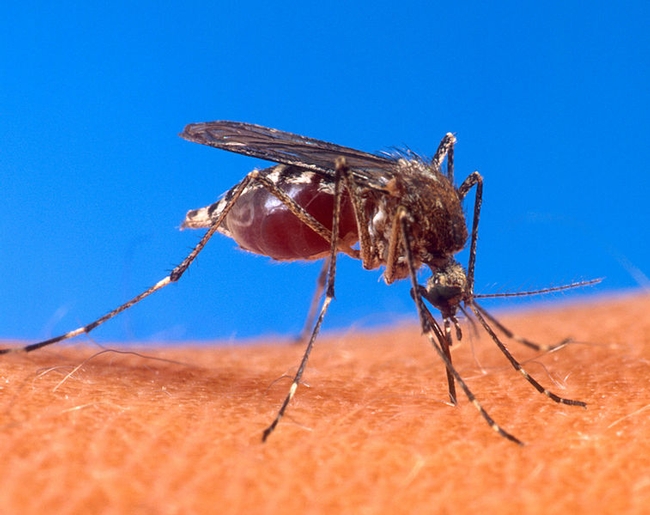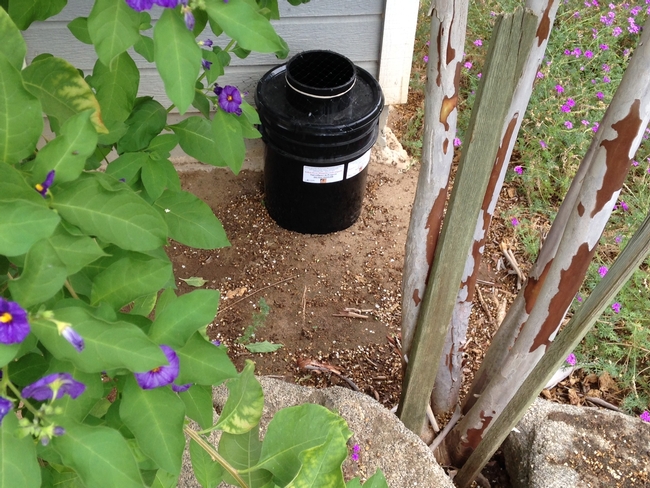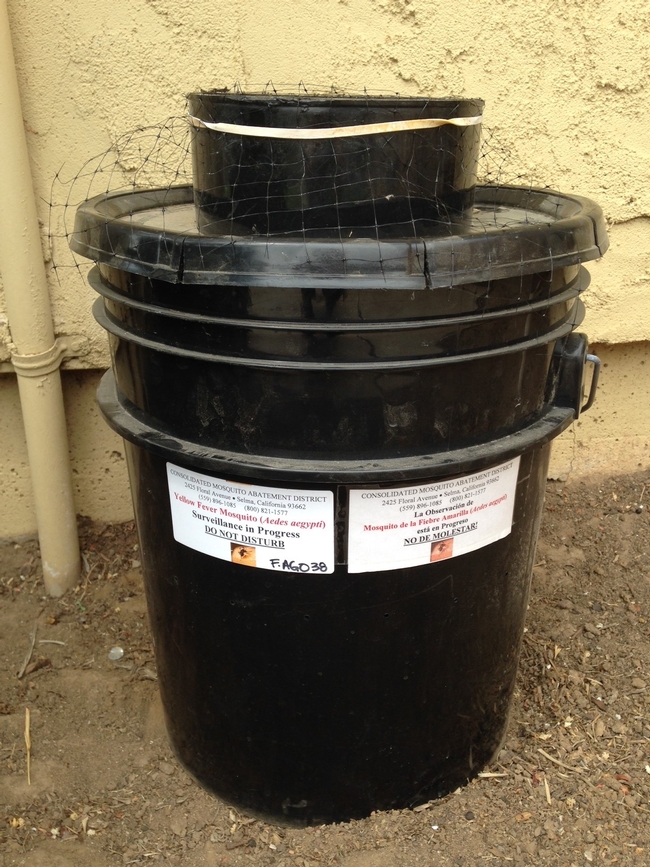
Posts Tagged: mosquitos
Officials target mosquitos that spread zika with new tools

(While populations of aedes aegypti have been found in California, the diseases have not.)
Cornel said officials need to attack the mosquitos on several fronts.
“There is no silver bullet,” he said.
One of the novel methods the scientists are studying is releasing male mosquitos infected with Wolbachia, a bacterium-like organism. They transfer the infection to females when they mate. The females then produce eggs that do not hatch.
Cornel is hopeful about the new technique.
"Maybe this proves to be an effective strategy, and hopefully it might become a standard control method," he said.
The Fresno Bee story also outlined a more-traditional approach to reducing mosquito populations that will be implemented by the Consolidated Mosquito Abatement staff. In one subdivision in southeast Clovis, the mosquito district asked residents for permission to enter their yards to search for and destroy mosquito breeding spots, such as old tires, toys, pet dishes and underground backyard drains. The project will show whether a vigilant effort to remove standing water will significantly reduce the number of mosquitos found in the neighborhood.
UC fights a mosquito new to California

The mosquitos - which can transmit dengue fever, yellow fever and chikungunya - were found in Clovis, Madera and San Mateo last year. Cornel has deployed 146 traps provided by the Centers for Disease Control in a Clovis neighborhood to see if they will knock down the population of the unwelcome pest.
Unlike more sophisticated traps that cost hundreds of dollars, the traps being used in Clovis are handmade in Puerto Rico for about $6 each, Khokha reported.
"(Mosquitos) are attracted to this trap to lay their eggs in, they get stuck to the glue, and of course, that's the end of the mosquito," Cornel said.
Listen to the story on The California Report by clicking the link below:
Scientists take on dangerous mosquitos in Central Valley
New mosquito death trap being tested in Clovis

Not all mosquitos are alike. Certain mosquitos have the ability to spread certain viruses. The illnesses spread by Ae. aegypti – yellow fever, dengue fever and more recently Chikungunya – were never given much thought in California, until now.
To test a new weapon in the arsenal against Ae. aegypti, Cornel is working with Consolidated Mosquito Abatement District personnel to deploy 146 mosquito death traps in the front yards of homes in a neighborhood east of Clovis Elementary School in Clovis. The traps were supplied by the Centers for Disease Control and made by hand in Puerto Rico.
The traps look like black five-gallon buckets. Orchard grass and water are placed inside.
“When the orchard grass decomposes, it releases a plume of chemicals that attracts female Ae. aegypti to lay their eggs in,” Cornel said.
A screen prevents them from flying down to the water to lay eggs, but the mosquitos adhere to black sticky paper that lines the top opening of the trap. Each week, district officials will count the number of mosquitos that have been trapped inside. Meanwhile, other, more sophisticated traps will continue to monitor Ae. aegypti mosquitos in the test area and in two other nearby neighborhoods where Ae. aegypti have been found.

The most deadly disease spread by Ae. aegypti is yellow fever. The illness has claimed hundreds of thousands of lives over centuries, mainly in tropical countries of Central and South America and Africa. A safe and effective vaccine is available, but yellow fever still takes a toll where medical infrastructure is inadequate.
Ae. aegypti also spreads dengue fever, for which there is no vaccine. Also known as “breakbone fever,” increasing cases of dengue worldwide is attributed to urban adaptations of this mosquito, human population growth, increased international travel and global warming.
A less severe but still debilitating disease, Chikungunya, is caused by a virus that mutated in 2005 in a way that allows it to switch vectors and be transmitted by Ae. aegypti and another mosquito Aedes albopictus. Chikungunya, which means “to be contorted” in an East African tribal language, causes a fever at first and later joint pain that can persist for months. However, more than half the people who contract Chikungunya have no symptoms at all. In July, two Florida residents were the first Americans who hadn't traveled outside the country to contract Chikungunya.
The arrival of Chikungunya in the United States has given greater urgency to officials trying to eradicate Ae. aegypti in California. Mosquito abatement officials have been going door-to-door, and with homeowners' permission, walking properties to make sure any pools of standing water are drained and treated with a pesticide that will kill mosquito larva if the receptacle again collects water. Treatment of landscape foliage with pyrethroid is also used for mosquito control, however, preliminary research by Cornel has found that Ae. aegypti possess a mutation that potentially allows them to resist chemical exposure, which requires further research to confirm their resistance status.
The map below shows the study area. The new mosquito death traps were placed in the front yards of homes in area "A."
Click here for the map. (pdf)
